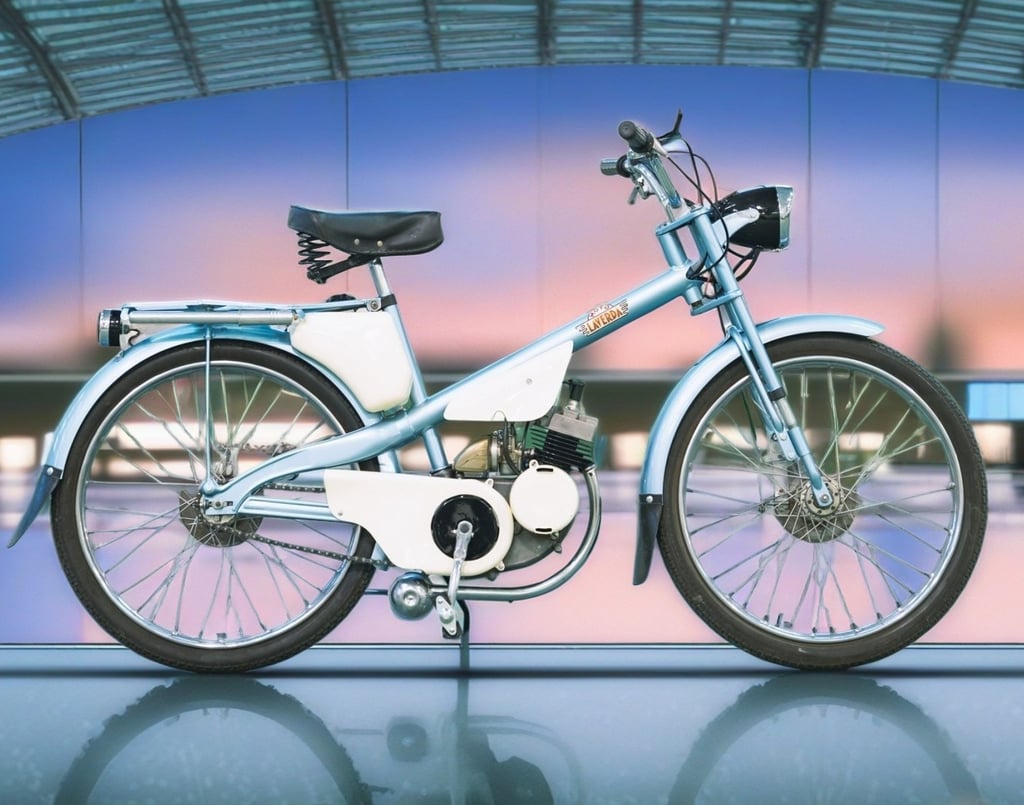Laverda's Uncharted Legacy: Mopeds and Scooters Illuminate a Forgotten Chapter of Italian Engineering Brilliance
This article explores the lesser-known history of Laverda Motorcycles, focusing on their ventures into the world of mopeds and scooters. It discusses how Laverda initially started with agricultural engines before transitioning to motorcycles in the post-war era. The article highlights Laverda's exploration of smaller, more affordable vehicles such as mopeds and scooters, which were designed to cater to the growing demand for simple transportation. It mentions the Laverdino, a notable 49cc two-stroke moped, and the Laverda 49cc Mini Scooter, which featured innovative design elements like a four-stroke engine and a pressed-steel monocoque chassis. These mopeds and scooters, though overshadowed by Laverda's larger motorcycles, showcase the brand's versatility and commitment to meeting diverse consumer needs.
ITALY TWO STROKEVINTAGE MOPEDSLAVERDA
2/20/20243 min read


Laverda's Uncharted Legacy: Mopeds and Scooters Illuminate a Forgotten Chapter of Italian Engineering Brilliance
Introduction
Laverda Motorcycles—a name that resonates with power and performance amongst the connoisseur of fine Italian motorcycles. Yet, beyond the thunderous roar of their iconic three-cylinder engines lies a quieter, but no less significant chapter—the world of Laverda mopeds and scooters. Introducing a narrative that ventures into the company's explorations beyond legendary bikes, this article sheds light on a facet of Laverda that whispers of versatility and innovation.
Laverda's Early Ventures into Two-Wheeled Mobility
Laverda's origin story is deeply rooted in the industrious landscape of 19th-century Italy. Founded in 1873 by Pietro Laverda, the company initially focused on agricultural engines. It wasn't until the post-war era that Laverda would pivot to the world of motorcycles, driven by Francesco Laverda's vision of efficient and dependable two-wheeled transportation for post-war Italy.
This vision materialized in October 1949 when Moto Laverda was formally established. Embracing the widespread need for affordable mobility, the company's initial forays into motorcycle manufacturing focused on small-displacement bikes. However, this would only be the beginning, as Laverda explored the broader scope of two-wheeled mobility, venturing into the realms of mopeds and scooters—a move that would enrich its legacy and diversify its offerings.
The Moped Era: Exploring Laverda's Compact Creations
Against the backdrop of a world reuniting and reconstructing after the ravages of World War II, Laverda saw a segway into the moped market as a means to address the growing demand for simple and affordable transportation. Their mopeds, characterized by modest engine displacements and a practical design, were precisely attuned to the needs of the commuting masses of that era.
Laverda's mopeds stood out for their robust construction and dependability. A notable mention is the 'Laverdino', a 49cc two-stroke moped launched in 1964, designed to be lightweight yet durable—ideal for the narrow and winding Italian streets. As an accessible option for everyday commuters, Laverda mopeds carved a niche for themselves, embodying Italian craftsmanship in a compact form factor. These small, yet significant machines contributed to the tapestry of Laverda's rich history—though often overshadowed by their larger motorcycle counterparts.
Laverda Scooters: A Niche in Italian Excellence
In a move to further expand their range, Laverda entered the scooter market, hoping to compete with the likes of Vespa and Lambretta. A step into this new territory was marked by the introduction of the Laverda 49cc Mini Scooter. With a design ethos rooted in innovation, the Mini Scooter featured a four-stroke engine, a rarity for scooters at the time, and a two-speed, twistgrip-controlled transmission. The Mini Scooter was characterized by its pressed-steel monocoque chassis, a departure from the tubular frames commonly used by competitors. Its layout not only provided structural rigidity but also exemplified Laverda's attention to detail and engineering prowess. While these scooters did not reach the iconic status of their motorcycle brethren, they demonstrated the brand's adaptability and commitment to addressing a diverse set of consumer needs.
Conclusion
Laverda's foray into mopeds and scooters, albeit a less-known facet of their history, represents an era of ingenuity and adaptability. These light vehicles punctuate Laverda's legacy, illustrating that their pursuit of excellence transcended the motorcycle segment. Through these endeavours, Laverda enriched the narrative of Italian two-wheeled engineering, leaving an indelible mark on the industry's history. Today, these mopeds and scooters are a testament to the brand's enduring influence and a nostalgic nod to a bygone era of Italian design and innovation. Laverda's journey through the realm of mopeds and scooters, while less celebrated than their illustrious motorcycles, is a vibrant part of their storied legacy. These smaller, nimbler vehicles carry the spirit of Laverda's innovation and craftsmanship in the two-wheeled world. As beacons of Italian design and mechanical artistry, they underscore the diverse capabilities of a brand renowned for its powerful bikes. Laverda's mopeds and scooters remain integral to the fabric of light vehicle history, embodying a unique chapter of pioneering spirit and Italian two-wheeled excellence.
